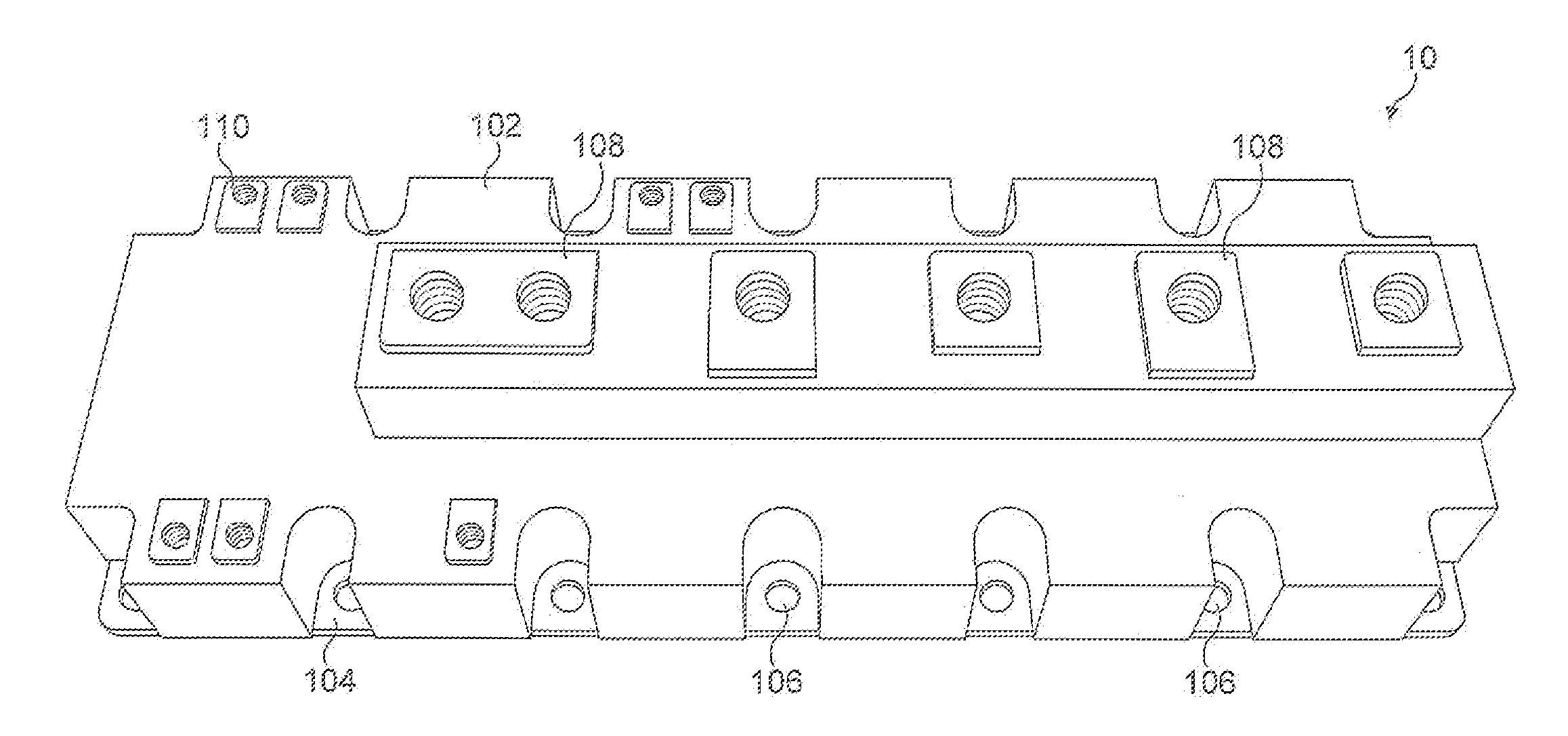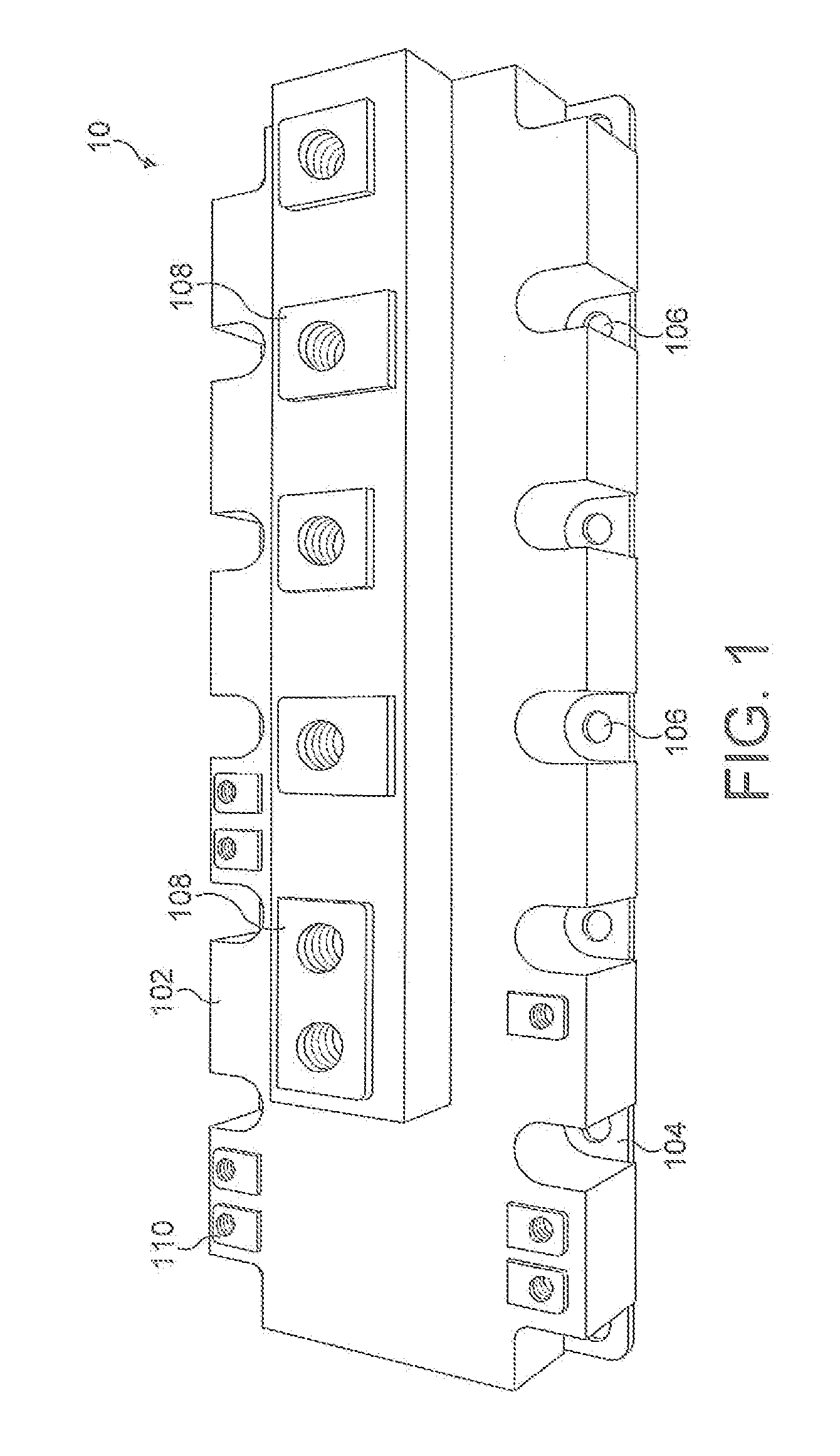Optical sensor system and detecting method for an enclosed semiconductor device module
a technology of optical sensor and semiconductor device, which is applied in the direction of instruments, heat measurement, optical elements, etc., can solve the problems of inability to accurately reflect the operating temperature of the power electronic components, the current sharing measurement such as these is often impractical in commercial implementation, and the current sharing measurement is not satisfactory. to achieve the effect of reducing the stress of optical fibr
- Summary
- Abstract
- Description
- Claims
- Application Information
AI Technical Summary
Benefits of technology
Problems solved by technology
Method used
Image
Examples
Embodiment Construction
[0040]Generally, the invention involves the provision of an optical fibre sensor system to a enclosed semiconductor device, such as a power electronics module or microprocessor with housing, to monitor its operation.
[0041]A particular example of the invention in a power electronics module will now be described with reference to FIG. 3. For the purposes of illustration, the construction of the power electronics module will be assumed to be largely identical to the devices shown in FIGS. 1 and 2. The module 300 has a plastic housing 302 with a copper base plate 304, onto which a DCB 306 is soldered or connected thermally with a suitable thermal interface material. The connection between the base plate and the DCB 306 could also be by so-called sintering processes. The base plate provides a sturdy base for the assembly and assists in spreading the heat from the plurality of active semiconductor devices, known as dies, mounted on the DCB 306.
[0042]The DCB 306 is formed of a ceramic mate...
PUM
 Login to View More
Login to View More Abstract
Description
Claims
Application Information
 Login to View More
Login to View More - R&D
- Intellectual Property
- Life Sciences
- Materials
- Tech Scout
- Unparalleled Data Quality
- Higher Quality Content
- 60% Fewer Hallucinations
Browse by: Latest US Patents, China's latest patents, Technical Efficacy Thesaurus, Application Domain, Technology Topic, Popular Technical Reports.
© 2025 PatSnap. All rights reserved.Legal|Privacy policy|Modern Slavery Act Transparency Statement|Sitemap|About US| Contact US: help@patsnap.com



